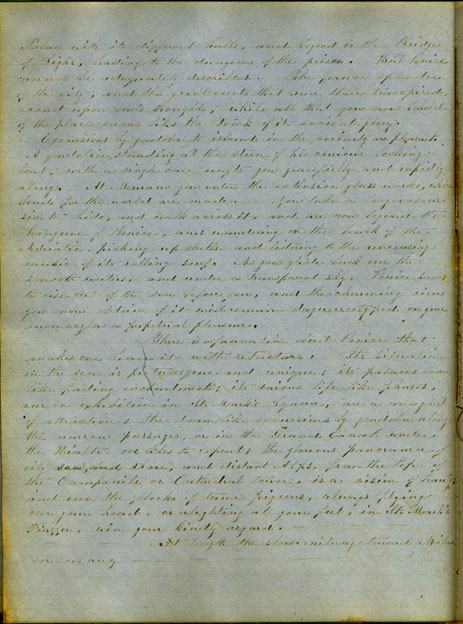Travel
Diary of Mrs. R.P. Eaton:
Europe,
Egypt, and Palestine, ca. 1857

Excursion by gondola to islands in the vicinity are pleasant. A gondolier, standing at the stern of his curious looking boat with a single oar, wafts you gracefully and rapidly along. At Meurano you enter the extensive glass-works, where beads for the world are made. You take a longer excursion to Lido, and walk across it, and are now beyond the Langune of Venice, and wandering on the beach of the Adriatic picking up shells and listening to the unceasing music of its rolling surf. As you glide back over the smooth waters, and under a transparent sky, Venice seems to rise out of the sea before you, and the charming view you now obtain of it will remain daguerreotyped on your memory as a perpetual pleasure.
There is a fascination about Venice that makes one leave it with reluctance. Its situation in the sea is picturesque and unique; its palaces seem like fading enchantments; its various life-like phases, ever on exhibition in St. Mark’s Square, are a magnet of attraction; the dream-like excursions by gondola along the narrow passages, or in the Grand Canal under the Rialto, one likes to repeat; the glorious panorama of city, sea, and shore, and distant Alps, from the top of the Campanile or Cathedral tower, is a vision of beauty; and even the flocks of tame pigeons, always flying over your head, or alighting at your feet, in St. Mark’s Piazza, win your kindly regard.
At length the slow railway toward Milan bore us away.